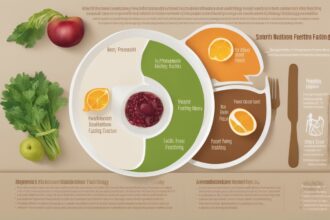Have you just completed a fast and are wondering how to ease back into eating without shocking your system? Refeeding after fasting is a critical step that can make or break the benefits of your fasting journey. Whether you’ve done a water fast, intermittent fasting, or a prolonged fast, reintroducing food requires a thoughtful approach to avoid discomfort or health risks. In this guide, we’ll explore practical refeeding strategies, backed by science, to help you transition smoothly while maintaining the gains of your fast. Let’s dive into how to nourish your body the right way after a period of abstinence.
Why Refeeding After Fasting Matters
When you fast, your body undergoes significant metabolic changes. Your digestive system slows down, and your body shifts to burning stored energy like fat for fuel. Suddenly reintroducing food, especially in large quantities or with the wrong types, can overwhelm your system. This is why a proper refeeding plan after fasting is essential. Without it, you risk symptoms like bloating, nausea, or even a dangerous condition called refeeding syndrome, which can occur in extreme cases of prolonged fasting. A mindful approach ensures your body readjusts safely while preserving benefits like improved insulin sensitivity and cellular repair.
Understanding Refeeding Syndrome and Risks
Refeeding syndrome is a rare but serious condition that can occur when food is reintroduced too quickly after a long fast or severe malnutrition. It’s caused by rapid shifts in electrolytes like potassium, magnesium, and phosphate, which can lead to heart complications or muscle weakness. While this is more common in clinical settings (like with patients recovering from starvation), it’s a reminder to approach post-fasting nutrition with caution. The risk is higher after fasts longer than 5–7 days or if you’ve lost significant weight. To minimize risks, start slow, prioritize nutrient-dense foods, and consult a healthcare provider if you’ve done an extended fast.
Key Principles for Safe Refeeding
Successful refeeding after fasting hinges on a few core principles. First, start small—your stomach has likely shrunk, and your digestive enzymes need time to ramp up. Second, focus on easily digestible foods to avoid overwhelming your gut. Third, hydrate well, as fasting can deplete fluids and electrolytes. Lastly, listen to your body; if you feel discomfort, slow down. These guidelines form the foundation of a safe transition back to regular eating, ensuring you don’t undo the hard work of your fast.
- Begin with small portions to avoid overloading your digestive system.
- Choose foods low in sugar and processed carbs to prevent blood sugar spikes.
- Incorporate electrolytes through broths or natural sources like coconut water.
- Avoid heavy, fatty meals that can cause nausea or bloating.
- Gradually increase food intake over several days, not hours.
Best Foods for Refeeding After Fasting
Choosing the right foods is a cornerstone of effective post-fast refeeding strategies. Start with light, nutrient-rich options that are gentle on your stomach. Bone broth is a fantastic first choice—it’s hydrating, rich in minerals, and easy to digest. Cooked vegetables like zucchini or carrots provide fiber and vitamins without being too heavy. Small amounts of lean protein, such as eggs or fish, can be introduced after a day or two. Avoid processed foods, sugary drinks, and raw veggies initially, as they can be harder to break down after a fast.
- Bone broth or vegetable broth for hydration and minerals.
- Steamed or boiled vegetables like sweet potatoes or spinach.
- Small servings of lean proteins like poached chicken or eggs.
- Healthy fats in moderation, such as avocado or olive oil.
Sample Refeeding Plan for Different Fasting Durations
Your refeeding after fasting approach should vary based on how long you’ve fasted. For a 16:8 intermittent fast, you might not need much adjustment—just eat a balanced meal. But for longer fasts, a structured plan is key. After a 24–48 hour fast, start with broth and light veggies for the first meal, then add protein the next day. For fasts of 3–5 days, extend the refeeding period over 2–3 days, starting with liquids and progressing to solids. For anything over 5 days, consider medical supervision and a very gradual reintroduction over a week or more. Tailoring your plan to your fasting duration ensures a smoother transition.
Common Mistakes to Avoid During Refeeding
Even with the best intentions, it’s easy to slip up during post-fasting recovery. One common mistake is eating too much too soon—your eyes might be bigger than your stomach after days without food. Another is jumping straight to heavy or processed meals, which can cause digestive distress. Skipping hydration is also a pitfall; water and electrolytes are just as important as food. Lastly, don’t ignore warning signs like severe fatigue or dizziness—these could indicate you’re pushing too hard. Being mindful of these errors can save you a lot of discomfort.
In conclusion, refeeding after fasting is a delicate but vital process that requires patience and planning. By starting slow, choosing the right foods, and listening to your body, you can safely transition back to regular eating while maximizing the health benefits of your fast. Whether you’re a seasoned faster or new to the practice, a well-executed refeeding strategy ensures you maintain the clarity, energy, and wellness gains you’ve worked for. Remember, fasting is only half the journey—how you break your fast is just as important. So, take it one bite at a time, and let your body guide the way. Have any refeeding tips or experiences to share? Drop them below—we’d love to hear from you!






